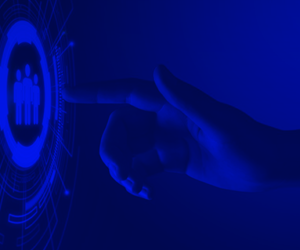The fourth edition of CeBIT in which Pentalog participated as an exhibitor is now over. What conclusions can be drawn? Well, it was average, no great surprises… While the first two editions provided good opportunities in terms of business (the Pentalog–Dmailer collaboration began following CeBIT 2006) as well as in terms of information, the 2008 and 2009 editions ran out of stream.The day before the trade show started, as I got on the plane to Hannover, which is usually full with business men, I saw the empty seats and the numerous German tourists returning home after visiting Paris, and I told myself that this week wouldn’t bring the expected results.Indeed, from the first day, I heard that the number of exhibitors had dropped by 20% compared to 2008. Some of the halls were half empty, in some of them the aisles were as wide as motorways… On the last day, Deutsche Messe AG announced on its website a 20% decline in visitors. I would specify that 20% refers to “professional” visitors, because I didn’t feel like there were fewer goodies hunters than usual. The presence of Schwarzie (California was the partner country of CeBIT this year) attracted many fans, but perhaps not enough IT professionals…The booth of Romanian IT companies, supported by the Romanian State, as usual, had to face serious organizational issues this year, mainly due to the fact that some companies cancelled their participation. This resulted in a reduced budget: lack of communication and inappropriate location of the booth, even though it was better than last year, when we were wedged in between MS and SAP, since the hall dedicated to outsourcing had been removed, due to lack of participants. So we met few qualified visitors. We had some interesting discussions with contacts we already knew before the show. However, certain prospects that had announced a visit to our booth did not even come!I went to see our offshore competitors and I had a few surprises. Among the things that have caught my attention, I found:- The Egyptian pavilion, impressively luxury and modern- A Spanish company offering nearshore teams based in Spain to big Spanish companies, to an average rate of € 240/day.- Chinese companies, which were everywhere, but I did not see many offshore providers among them. They were rather vendors.- Thailand, whom I saw for the first time on this show, as well as Vietnam, were represented on a national pavilion.- Indian outsourcing companies offering rates starting at € 3 per hour!I also attended a conference called “Webciety – The Internet as the heartbeat of modern society”, or how the Web 2.0 is radically changing the world of business as well as the lives of internet users. Among others, there were LinkedIn-boss Reid Hoffman, Marco Borries, Vice-President of Connect Life Yahoo! Inc. as well as German specialists in new media and web-marketing. It was amazing. I shall come back to this topic later.As a conclusion, CeBIT is an essential event in Europe, but it is not as interesting for us anymore as it used to be a few years ago. Of course, this is partly due to the economic down-turn, but not only. Many German visitors I met considered that CeBIT was relying a bit too much on its reputation and lacked innovative capacity. It looks like it increasingly suffers from the competition of more specialized trade fairs in Europe.Still, this did not prevent us from enjoying our evenings with other Romanian exhibitors, at the usual “Ernst August” brewery. We remain optimistic about the evolution of our business in Romania, a country that is now truly recognized as a “must” nearshore destination in Europe. I wish good luck to those who took part in this event!










